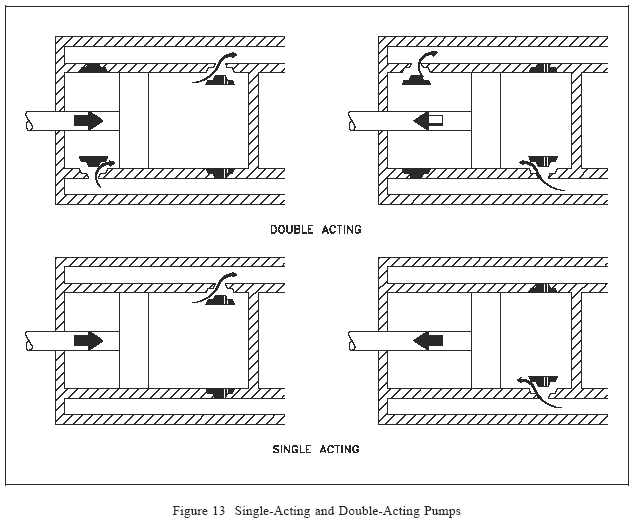Plunger Pump Review
Plunger Pump Review
Plunger Pumps are reciprocating positive displacement pumps which are generally configured in four ways: direct-acting or indirect-acting; simplex or duplex; single-acting or double-acting; and power pumps.
Some reciprocating pumps are powered by prime movers that also have reciprocating motion, such pumps are powered by a reciprocating steam piston or plunger. The plunger rod of the steam piston may be directly connected to the liquid piston of the pump or it may be indirectly connected with a beam or linkage. Direct-acting piston pumps have a plunger on the liquid ( pump ) end that is directly driven by the pump rod ( also the piston rod or extension thereof ) and carries the piston of the power end. Indirect-acting pumps are driven by means of a beam or linkage connected to and actuated by the power piston rod of a separate reciprocating engine.
A simplex plunger pump, sometimes referred to as a single piston plunger pump, is a pump having a single liquid ( pump ) cylinder. A duplex plunger pump is the equivalent of two simplex type pumps placed side by side on the same foundation. The driving of the pistons / plungers of a duplex pump is arranged in such a manner that when one piston is on its upstroke the other piston is on its down stroke, and vice versa. This arrangement doubles the capacity of the duplex pump compared to a simplex pump of comparable design.
A single-acting plunger pump is one that takes a suction, filling the pump cylinder on the stroke in only one direction, called the suction stroke, and then forces the liquid out of the cylinder on the return stroke, called the discharge stroke. A double-acting plunger pump is one that, as it fills one end of the liquid cylinder, is discharging liquid from the other end of the cylinder. On the return stroke, the end of the cylinder just emptied is filled, and the end just filled is emptied. One possible arrangement for single-acting and double-acting pumps is shown in Figure 13.
Power pumps convert rotary motion to low speed reciprocating motion by reduction gearing, a crankshaft, connecting rods and crossheads. Plungers are driven by the crosshead drives. Rod and piston construction, similar to duplex double-acting steam pumps, is used by the liquid ends of the low pressure, higher capacity units. The higher pressure units are normally single-acting plungers, and usually employ three (triplex) plungers. Three or more plungers substantially reduce flow pulsations relative to simplex and even duplex pumps.
Power pumps typically have high efficiency and are capable of developing very high pressures. They can be driven by either electric motors or turbines. They are relatively expensive pumps and can rarely be justified on the basis of efficiency over centrifugal pumps. However, they are frequently justified over steam plunger pumps where continuous duty service is needed due to the high steam requirements of direct-acting plunger steam pumps. In general, the effective flow rate of plunger pumps decreases as the viscosity of the fluid being pumped increases because the speed of the pump must be reduced. In contrast to centrifugal pumps, the differential pressure generated by plunger reciprocating pumps is independent of fluid density. It is dependent entirely on the amount of force exerted on the piston.
